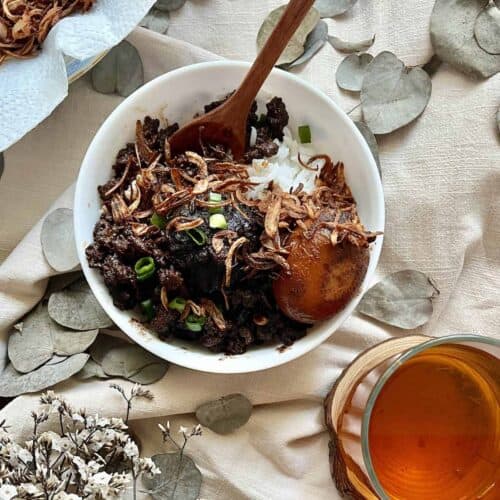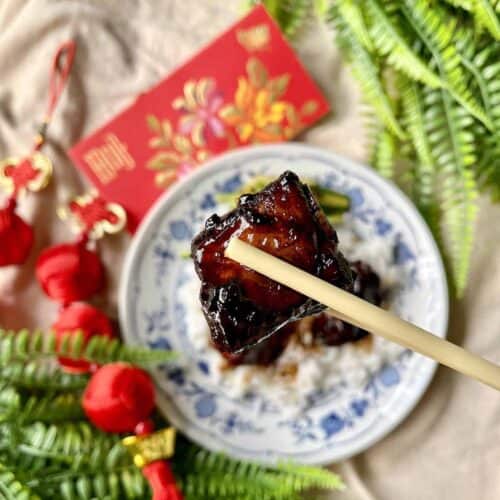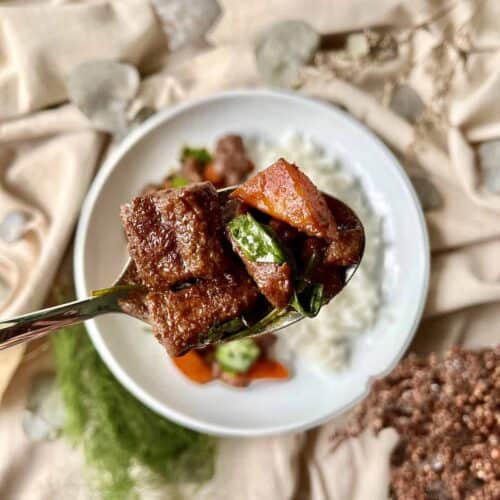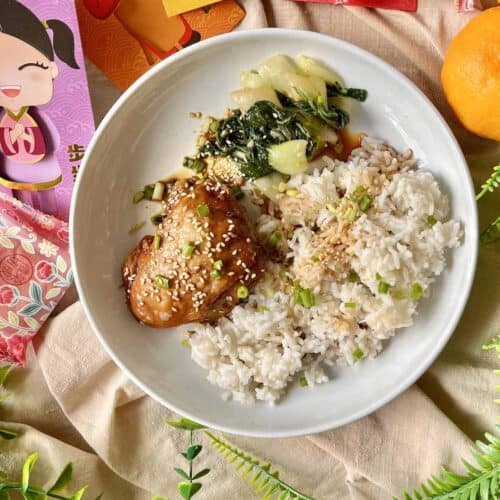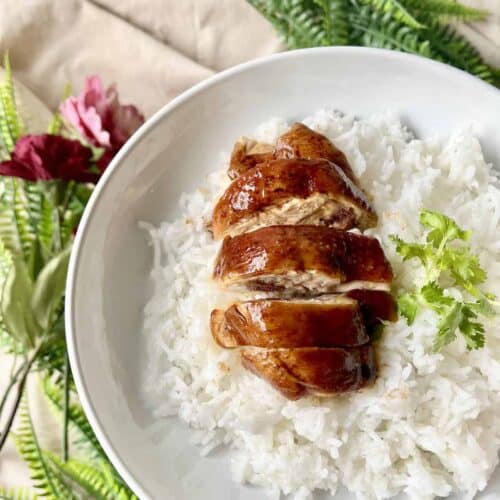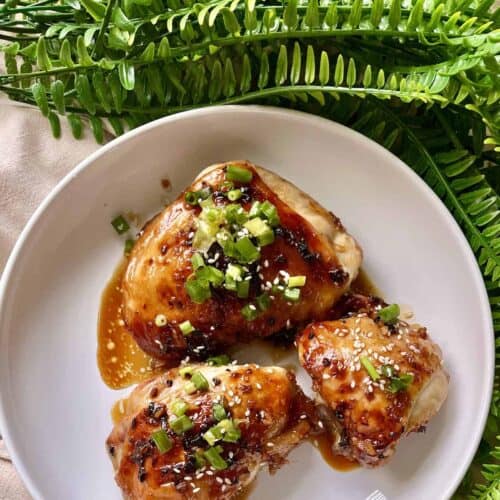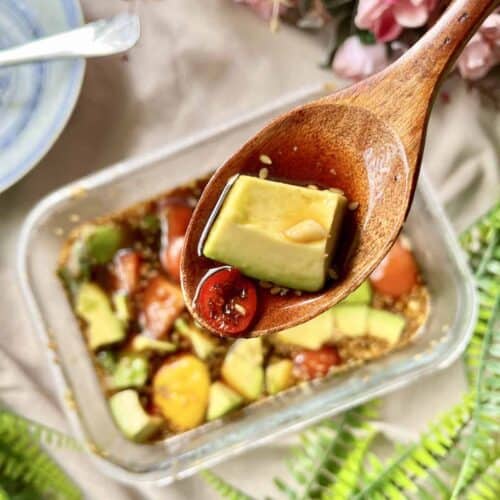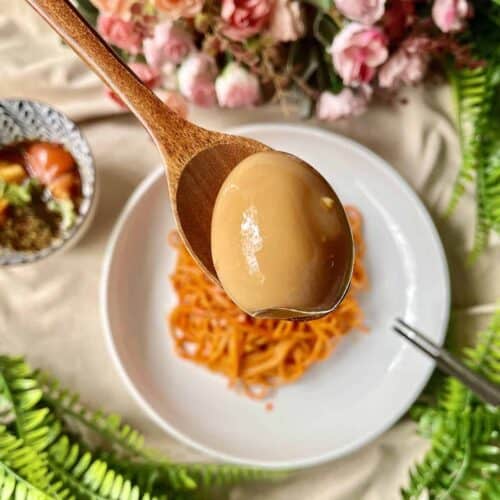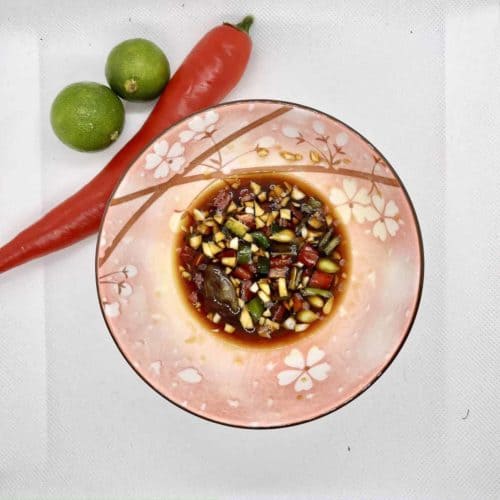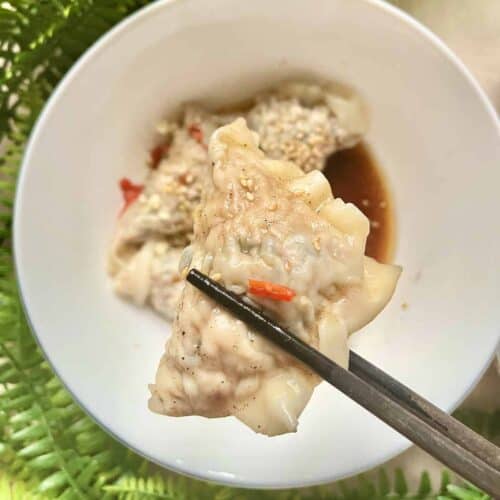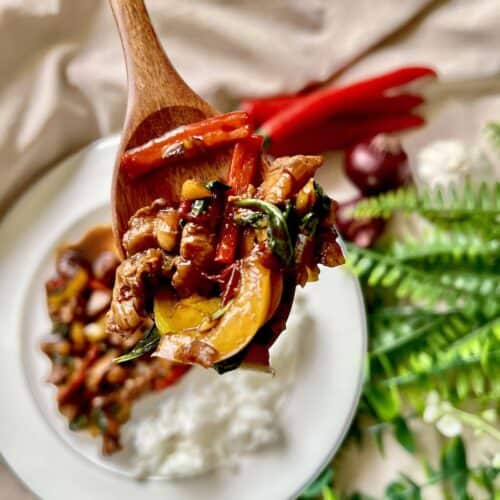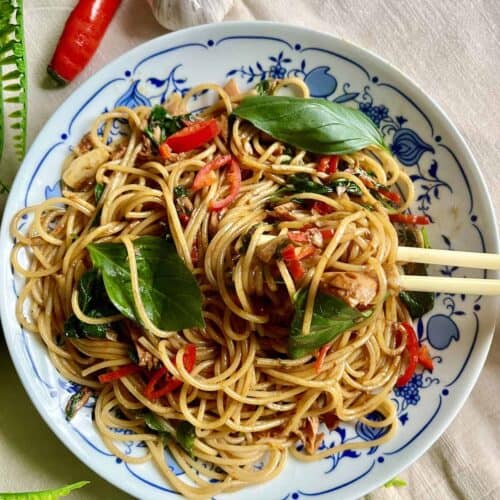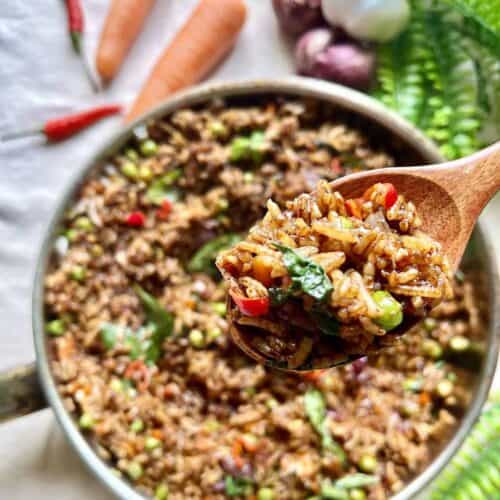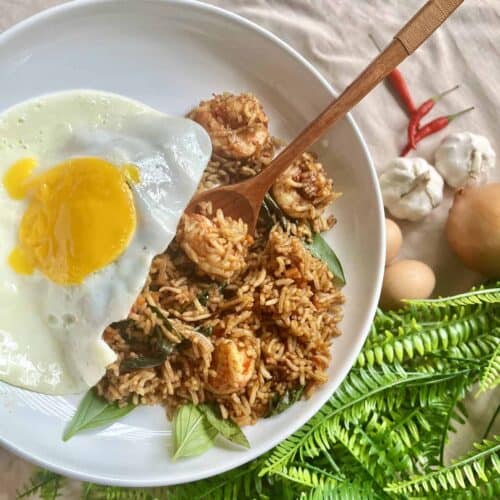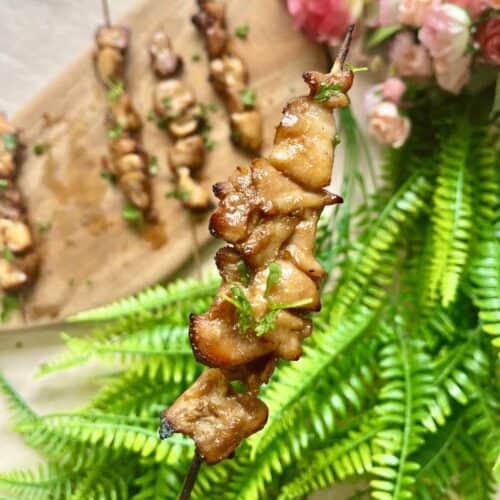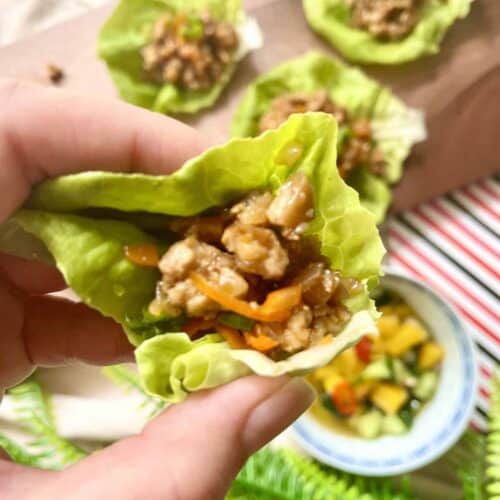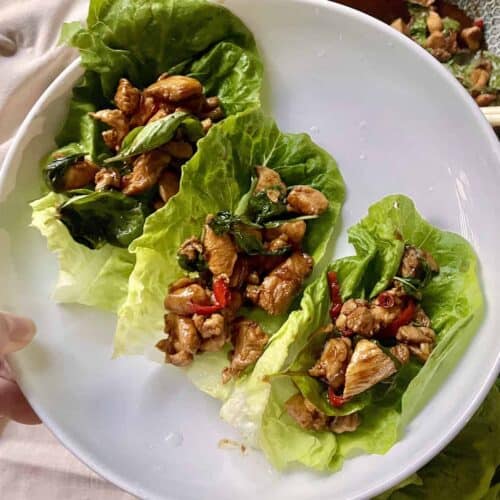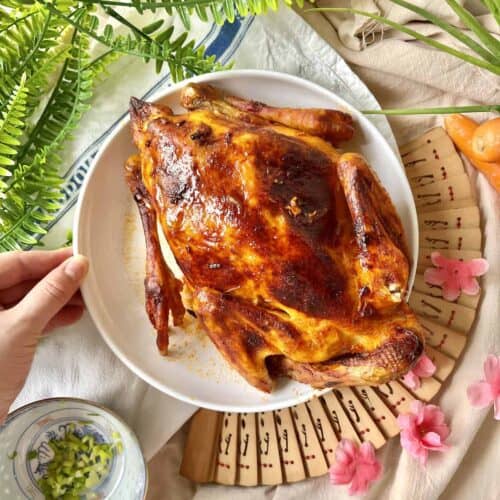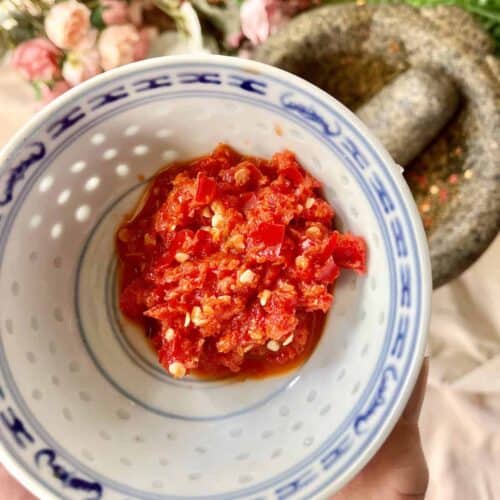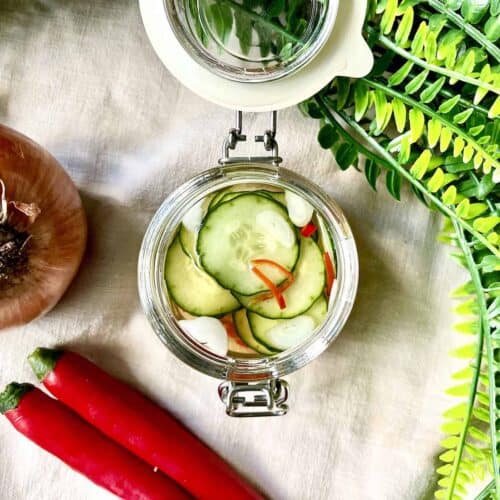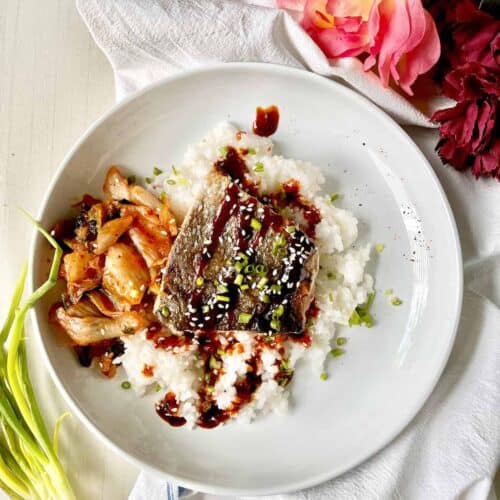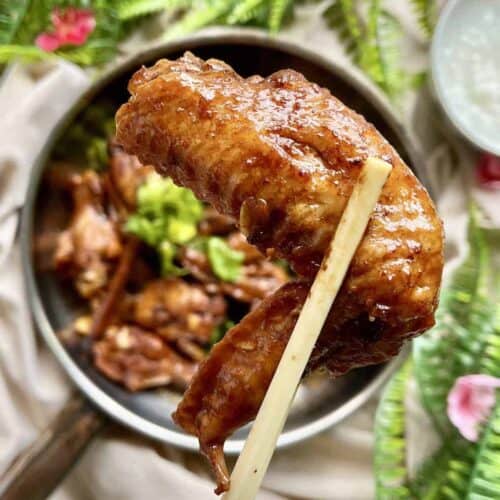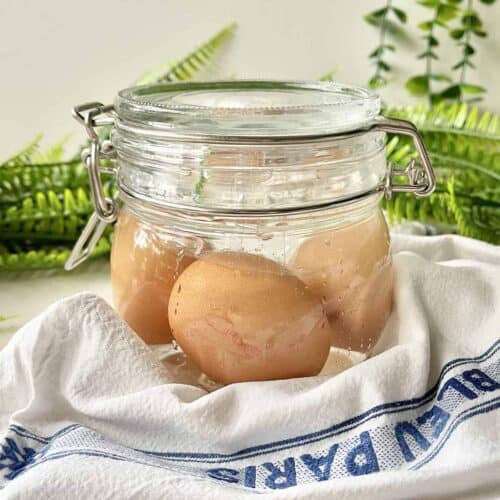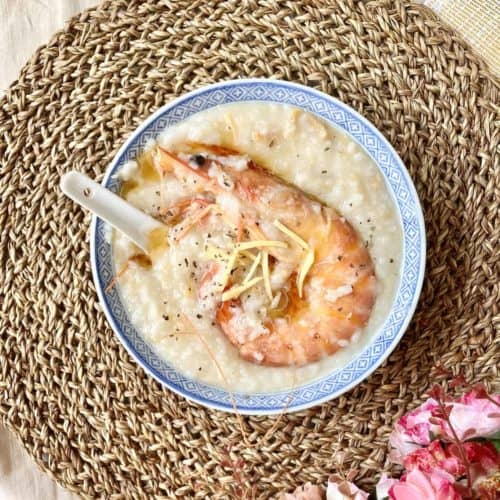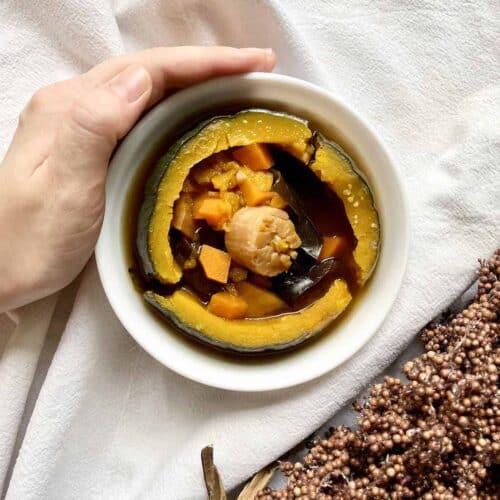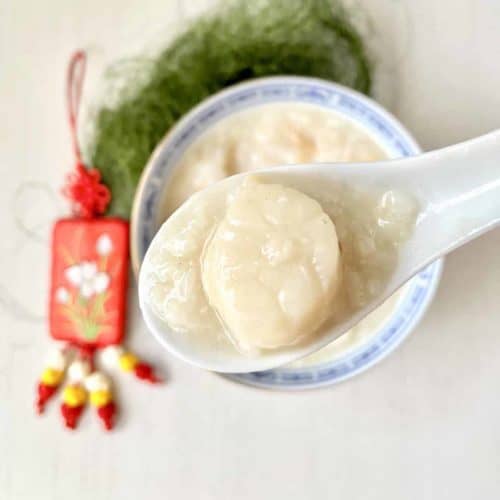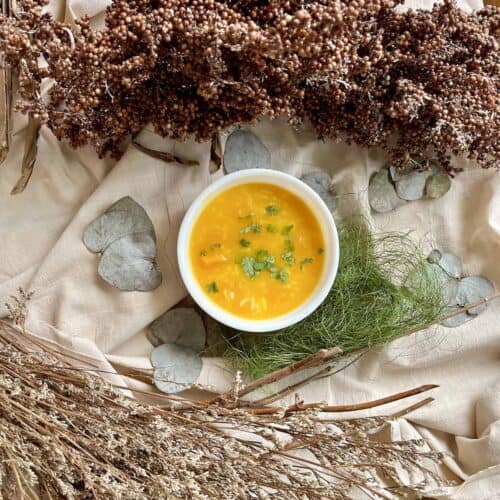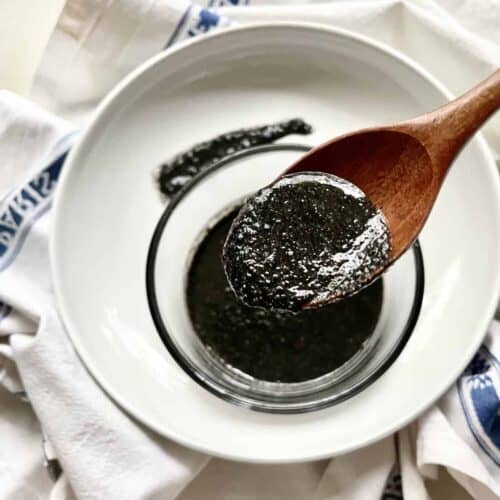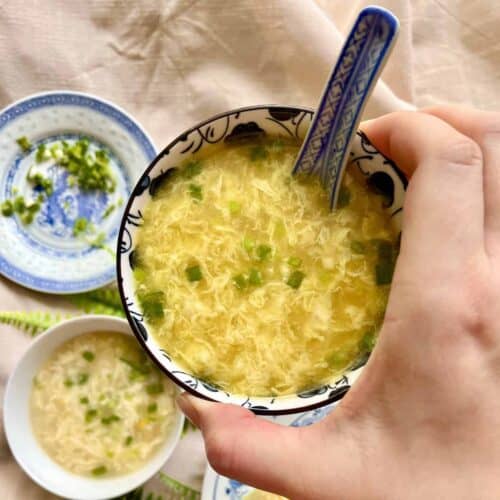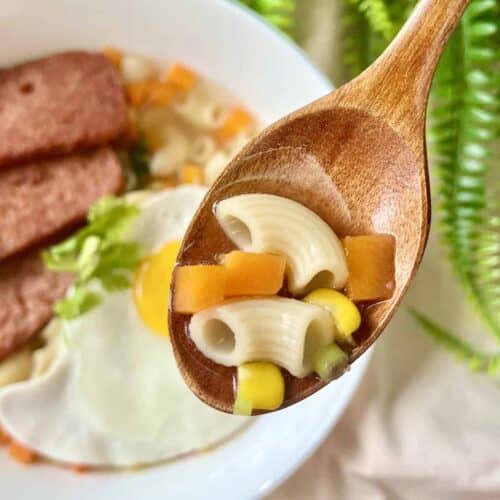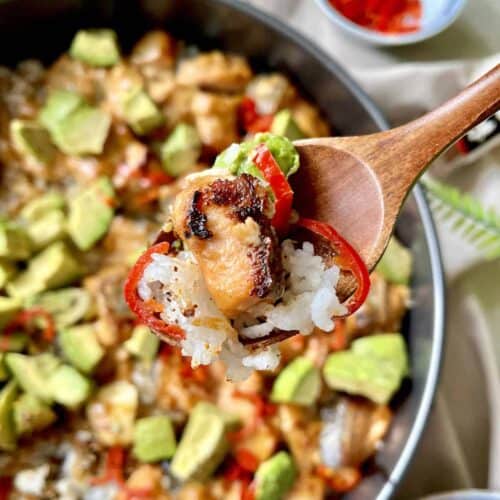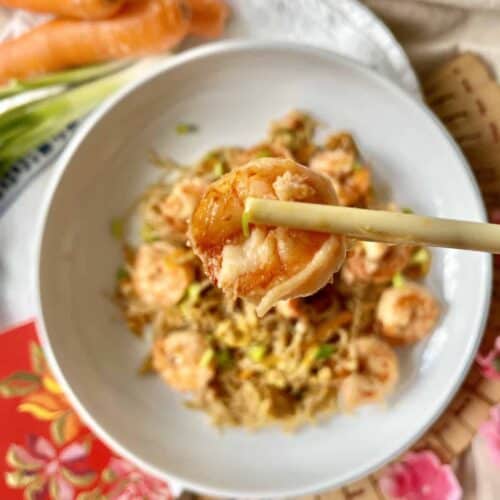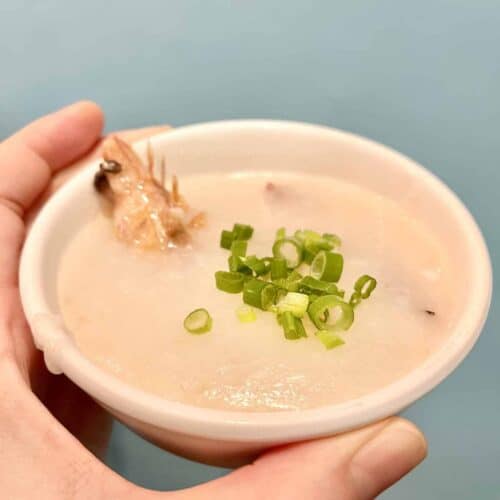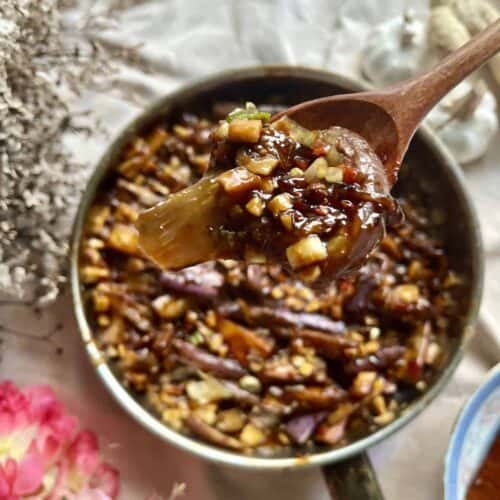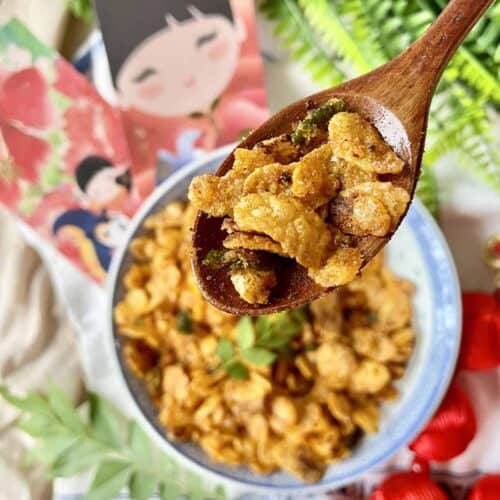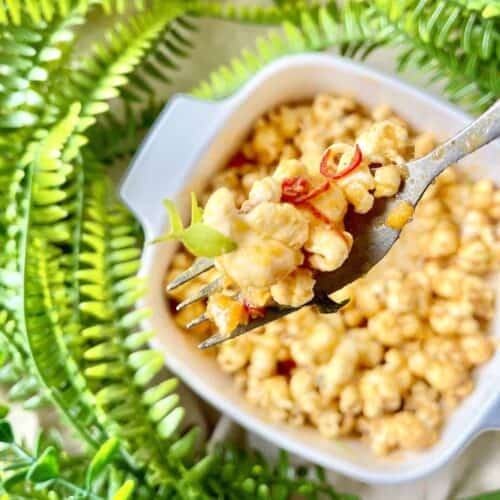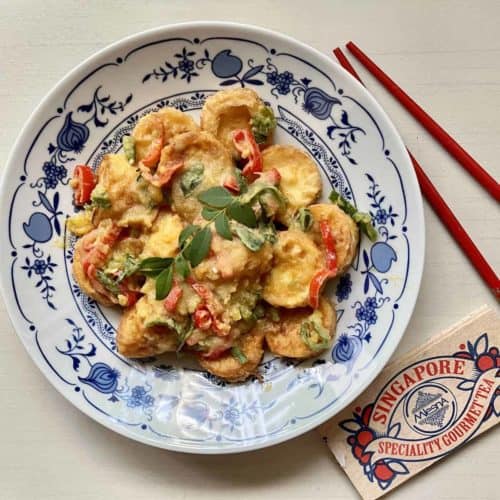A Comprehensive Guide to the most commonly used Asian sauces, from Vietnamese Nuoc Cham, Spicy Sriracha, Korean Gochujang and Japanese Teriyaki to Chinese Soy Sauce and Black Bean Sauce. If you want your Asian cooking to be better than takeout/ restaurant food and make even a plain rice bowl taste good, these 29 essential basic Asian Sauces are a must have in your kitchen pantry.

[feast_advanced_jump_to]
Asian cuisine relies heavily upon a variety of sauces and condiments to create rich, complex flavors in dishes.
The most obvious ones are soy sauce and oyster sauce but there are more to learn about if you want to replicate the food you get at Asian restaurants at home!
As there are so many Asian sauces, I’ll be dividing them into 4 sections:
- Basic Asian sauces: sauces which we use from a bottle e.g. dark soy sauce and Korean gochujang paste. These can be used in marinades, stir-fries or as dipping sauces.
- Asian stir-fry sauces: For example, Japanese Teriyaki sauce. These are created by mixing basic Asian sauces, sometimes with other ingredients. (However, for the time-poor, you can also buy them pre-prepared in bottles in the Asian market.)
- Dipping sauces: e.g. Pancake Sauce and Dumpling Sauce. These dips can be from a bottle or made by mixing other sauces.
- Others: e.g. Char Siu Sauce which is used to marinade pork before roasting.
1. Basic Sauces
Soy
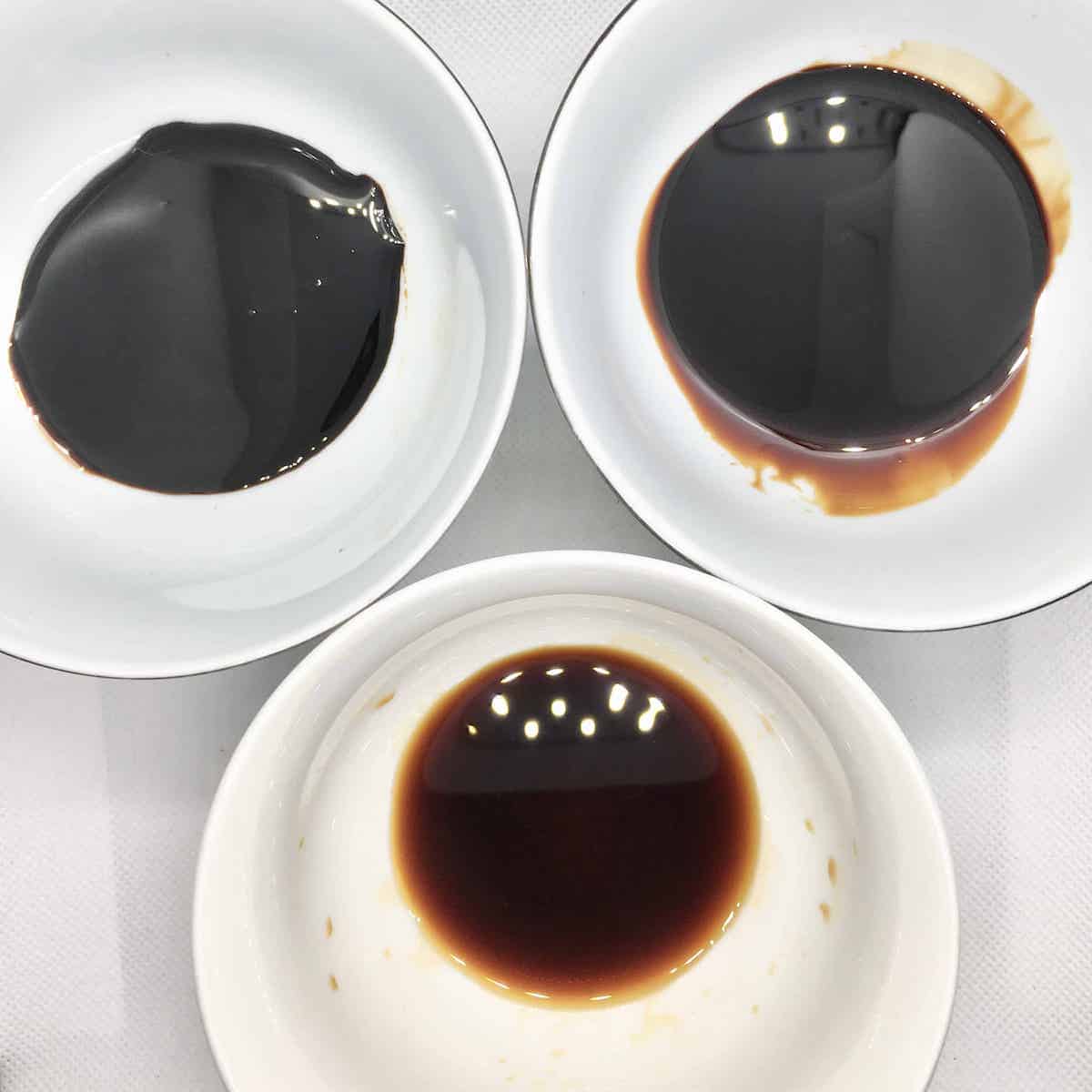
Soy sauce is perhaps the most basic and most widely-used sauces in Asian cooking. You can find it in Chinese, Japanese, Korean, Indonesian and even Filipino cooking.
However, each country’s soy sauce is a little different. For example, Koreans have soy sauce that is just for soup. To get authentic Chinese/ Korean/ Japanese/ etc flavor, use Chinese (e.g. Lee Kum Kee)/ Korean (e.g. Sempio)/ Japanese (e.g. Kikkoman)/ etc soy sauce.
There are a few types of soy sauce:
- light soy sauce (most common- adds umami and saltiness)
- dark soy sauce (adds umami and color to dishes)
- sweet soy sauce
- soy sauce for seafood etc
Expert Tip for Celiacs: if you are on a gluten-free diet, tamari and coconut aminos are commonly used to replace soy sauce (which contains wheat flour.)
Used in These Recipes
Soy sauce can be used in marinades, stir-fries and dipping sauces.
For example, soy sauce is the star of the show in Chinese braised chicken thighs, Hong Kong Soy Sauce Chicken, and Korean Mayak Avocados and Soy Marinated Eggs.
-
Rou Zao Fan (Easy Lu Rou Fan)
-
EASY 12345 Chinese Ribs (5-ingredients)
-
Tau Yew Bak (Braised Pork in Soy Sauce)
-
Easy Chinese Braised Soy Sauce Chicken Thighs
-
Best Poached One Pot Soy Sauce Chicken
-
Easy Baked Teriyaki Chicken Thighs
-
Quick Eryngii Mushrooms (3-ingredients)
-
Mayak Avocado
-
10 MINUTE Mayak Eggs
-
Easy Tamarind Sauce
-
Toyomansi Sauce (Calamansi Soy Sauce)
-
Chinese Dumpling Sauce (5 min)
Oyster
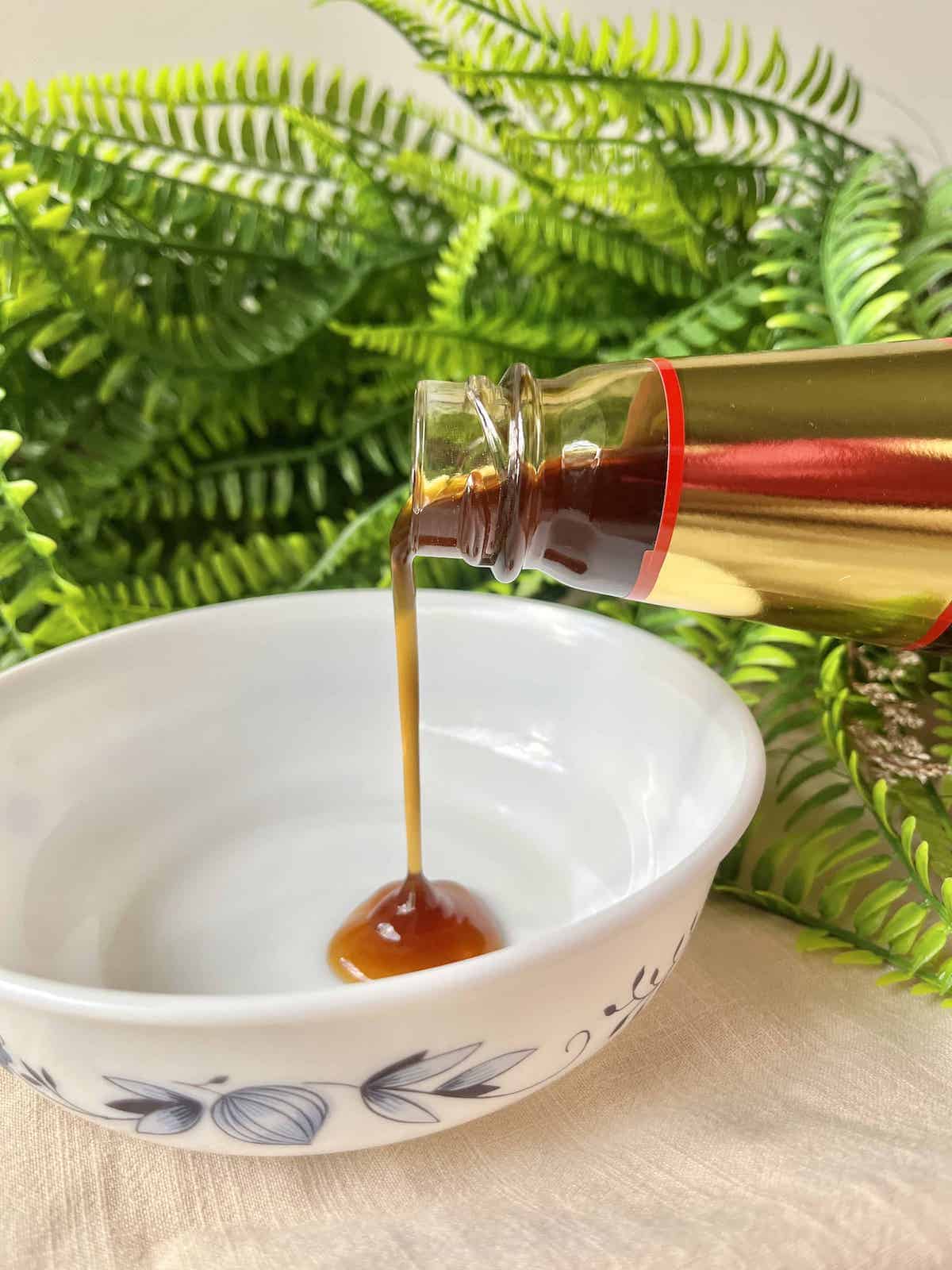
Oyster sauce 蚝油 is another popular ingredient in Asian cuisine, with a deeply savory, slightly sweet flavor. (It’s the ingredient I can’t miss out on in my pantry!)
You can find this versatile sauce in Chinese, Korean and Thai dishes.
This seafood sauce was originally made by boiling down sauces into a thick extract (invented by Lee Kum Kee, which is still my preferred brand to date.) These days, to save money, it is made from oyster extracts, sugar, soy sauce, and cornstarch.
Unlike fish sauce, oyster sauce doesn’t have a fishy flavor despite being full of umami (鲜味 xiānwèi).
Depending on how much oyster extract is in the sauce, there are different grades of oyster sauce.
It can be used as a stir-fry sauce or in marinades and glazes.
Expert Tip for vegans: Vegetarian oyster sauce alternatives are available, made from mushrooms.
-
Easy Thai Basil Chicken (20-minute)
-
Easy Drunken Noodles (Spaghetti Pad Kee Mao)
-
Thai Basil Fried Rice (Vegetarian) (20 min)
-
Thai Basil Fried Rice with Shrimp (Khao Pad Goong)
-
EASY Chinese Chicken on a Stick
-
Pork Lettuce Wraps (San Choy Bow)
-
Thai Chicken Lettuce Wraps (20 min)
-
EASY Hoisin Chicken Thighs
Korean Gochujang
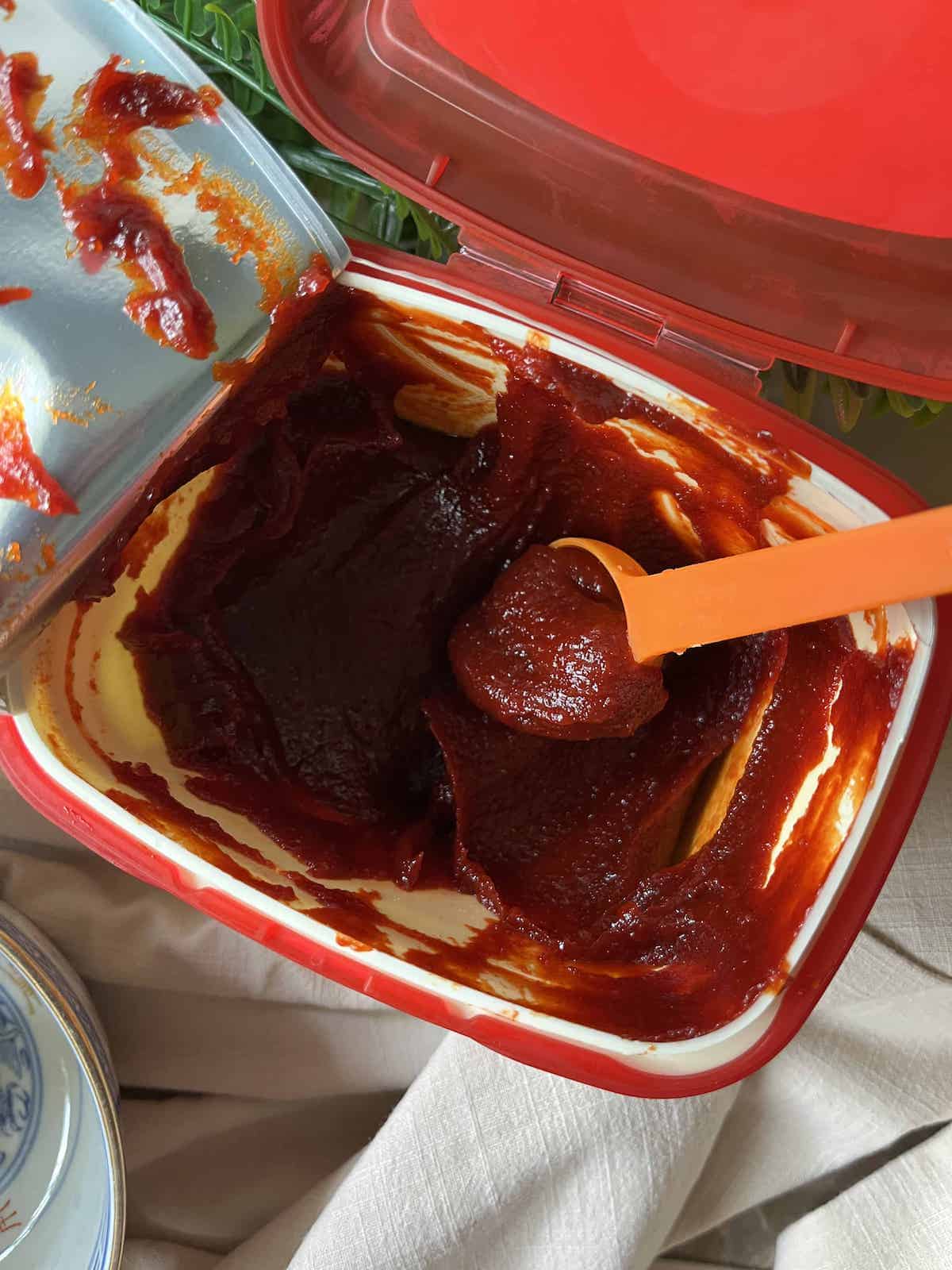
This is a basic building block in Korean cooking. If you can’t get it where you are here’s an easy DIY gochujang recipe.
Sriracha
Sriracha is a popular garlic chili sauce made with chili peppers, vinegar, garlic, sugar, and salt. It’s commonly used in Thai and Vietnamese cooking but I use it to add a tinge of spice to other dishes such as these Japanese-inspired honey soy shrimps.
Rice Vinegar
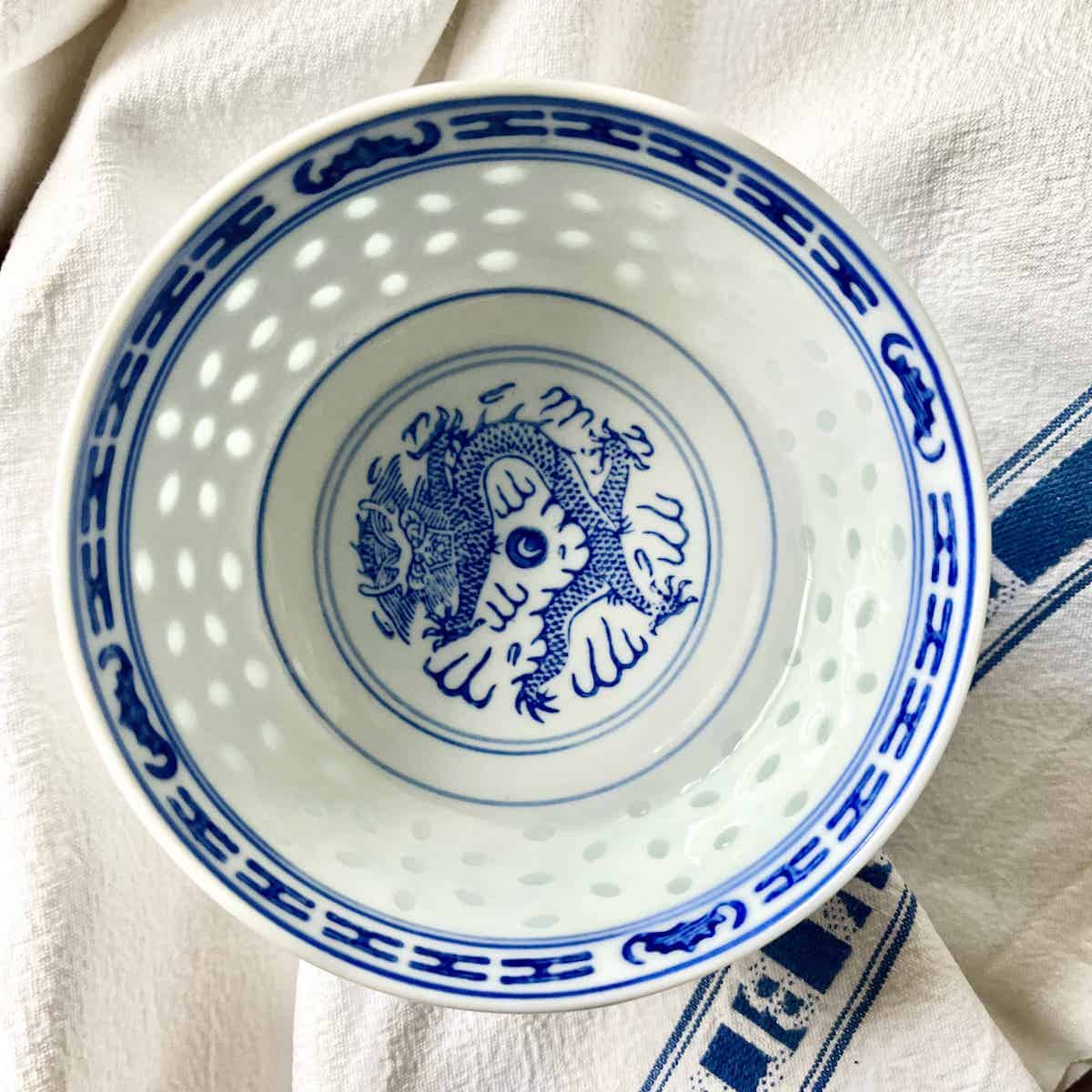
Asian cooking uses a range of rice vinegars to impart tart or tangy flavors to lift dishes. It’s used in everything from marinades to salad dressings.
The 2 main types of rice vinegar are:
- black vinegar: this is the less commonly used of the 2 vinegars. We see it primarily in dumpling dipping sauce as well as some braised recipes. Black vinegar is dark in color, with a sweet, complex and sometimes smoky flavor, somewhat similar to balsamic vinegar.
- white rice vinegar: this has a milder, sweeter taste. White Rice Vinegar is a clear, thin liquid used in many Chinese recipes, such as sweet and sour dishes or pickles.
Used in These Recipes
Hoisin
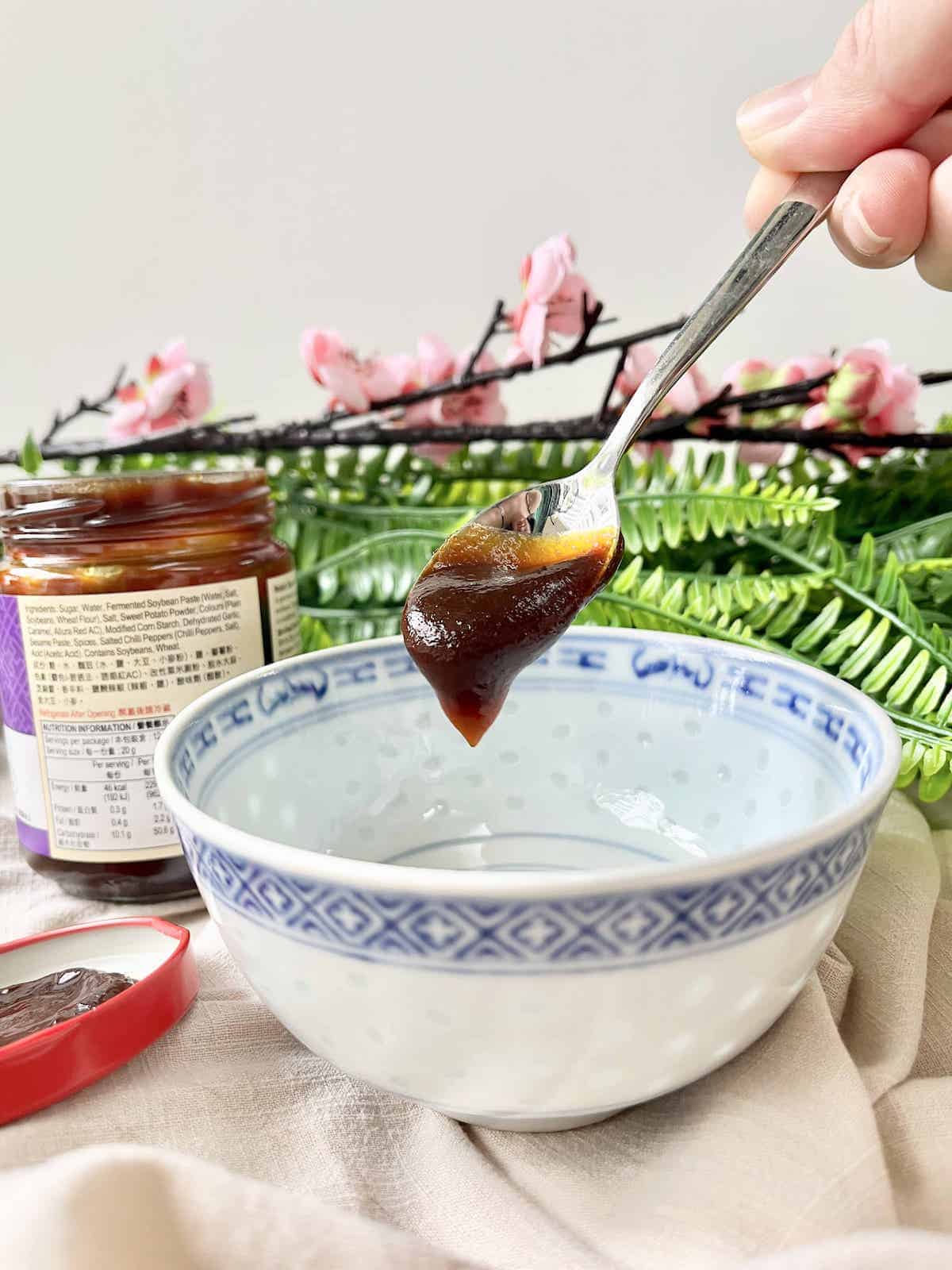
Hoisin sauce 海鲜酱 is a thick, sweet, and salty condiment made from fermented soybean paste, sugar, vinegars, garlic, and other spices. It provides a depth of flavor, often used in combination with other sauces and aromatics.
Literally translated as “seafood sauce”, it doesn’t contain seafood and is not usually eaten with seafood. Rather, it’s used in recipes like Chinese braised chicken wings, Braised Chicken Thighs, and Chicken Skewers.
It is also commonly used in dishes such as Peking duck, stir-fries, and as a dip or glaze for protein like tofu or vegetables.
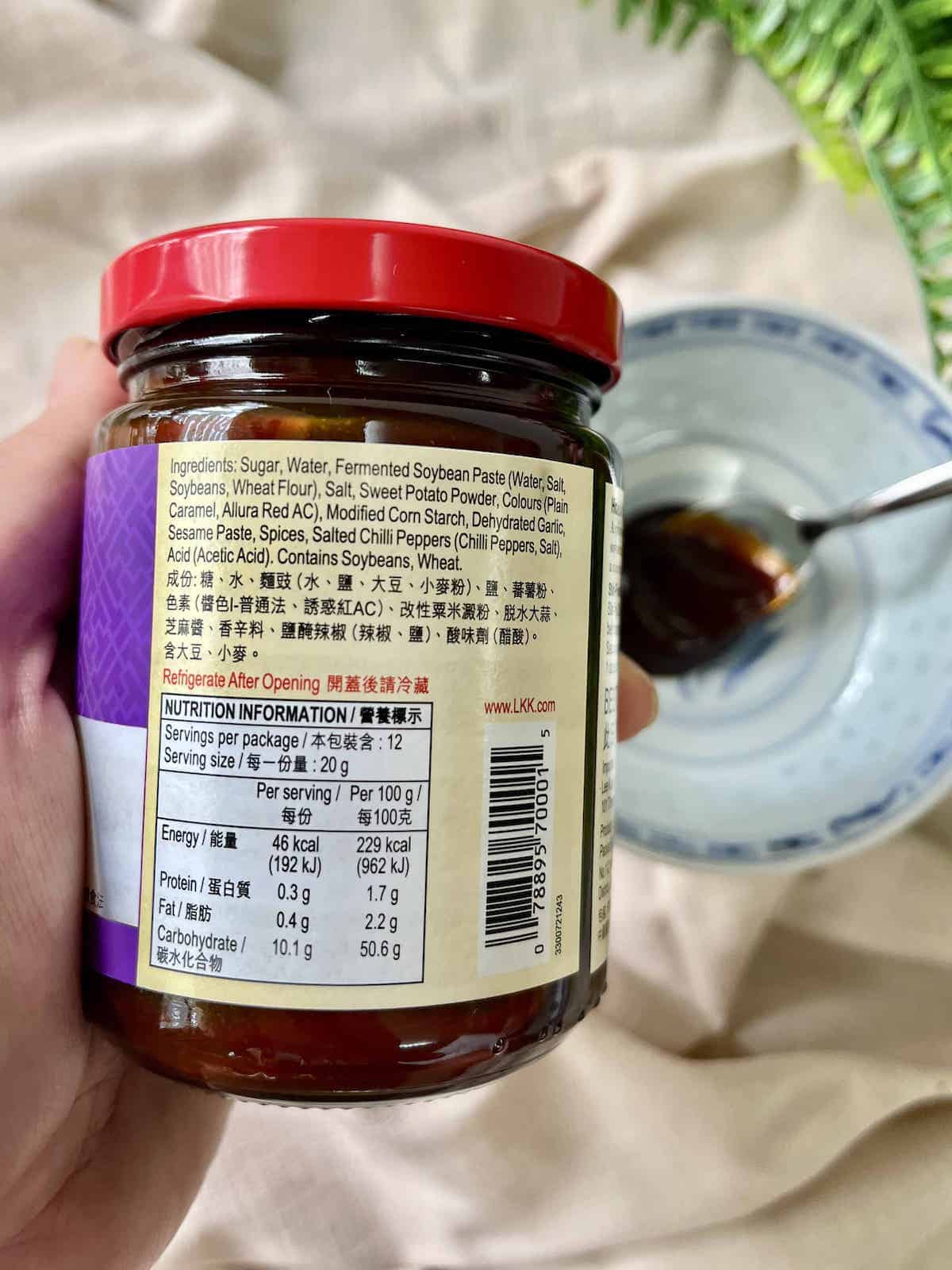
If you’re not sure how hoisin sauce differs from oyster sauce, click here.
Used in These Recipes
Shaoxing Wine
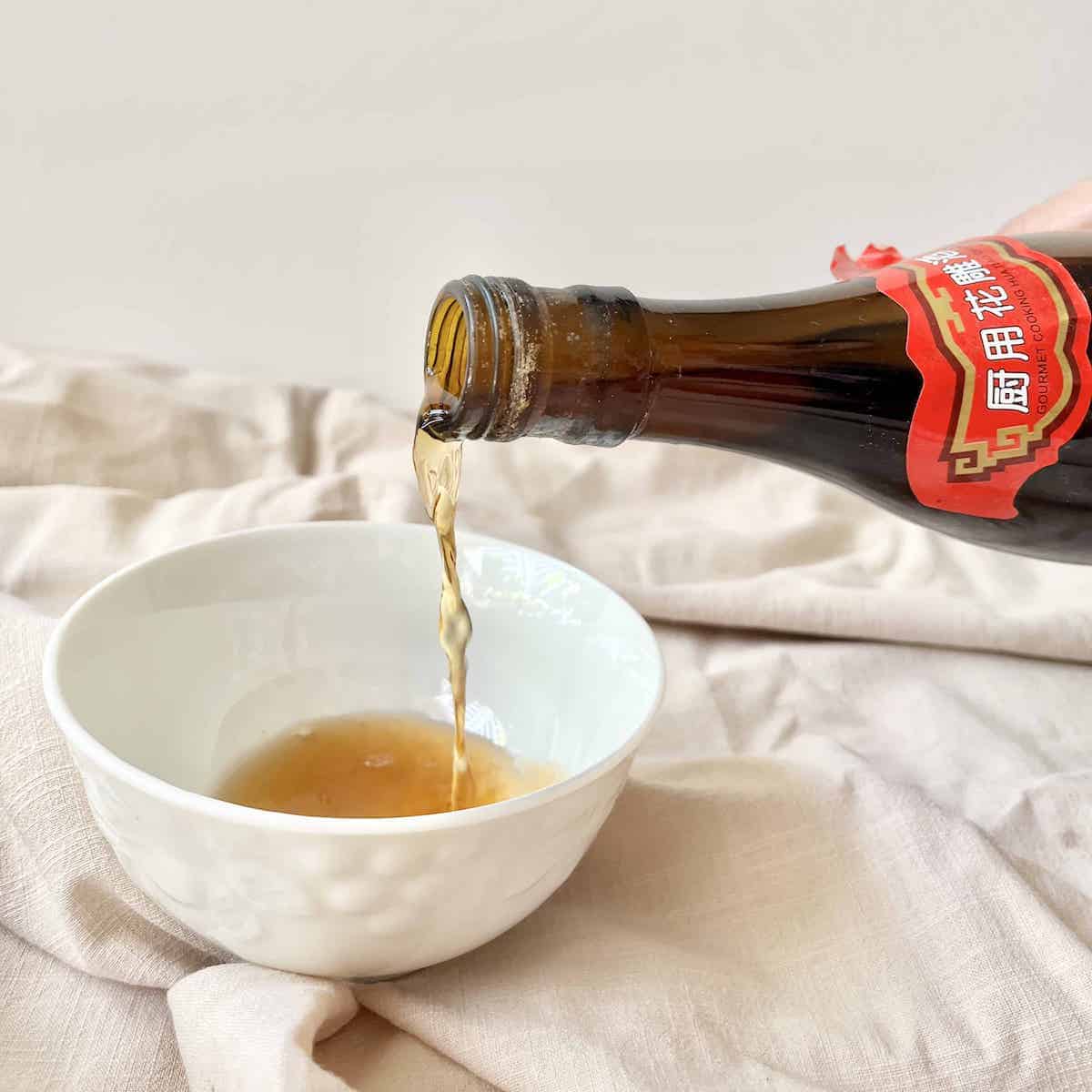
Shaoxing wine is a type of Chinese rice wine that originated in Zhejiang.
It is a very common ingredient in Chinese cooking. Its use ranges from marinating seafood to remove the fishy odour to adding depth of flavor in braising meat.
There is a whole range of quality available, from cheap cooking Shaoxing (usually contains salt) to premium Shaoxing that can be drunk.
If you can’t find it, here are good Shaoxing substitutes such as dry sherry. Some people use Japanese rice wine, such as Mirin, as a replacement but that’s sweeter- sake or Korean soju would be a better bet.
Used in these Recipes
-
Rou Zao Fan (Easy Lu Rou Fan)
-
How to Make Chinese Salted Egg Recipe
-
Best Poached One Pot Soy Sauce Chicken
-
Easy Chinese Shrimp Congee
-
Chinese Pumpkin Soup with Carrots
-
Dried Scallop congee (Cantonese rice porridge)
-
Easy Chinese Pumpkin Porridge with Fish
-
Easy Chinese Braised Soy Sauce Chicken Thighs
Sesame Oil
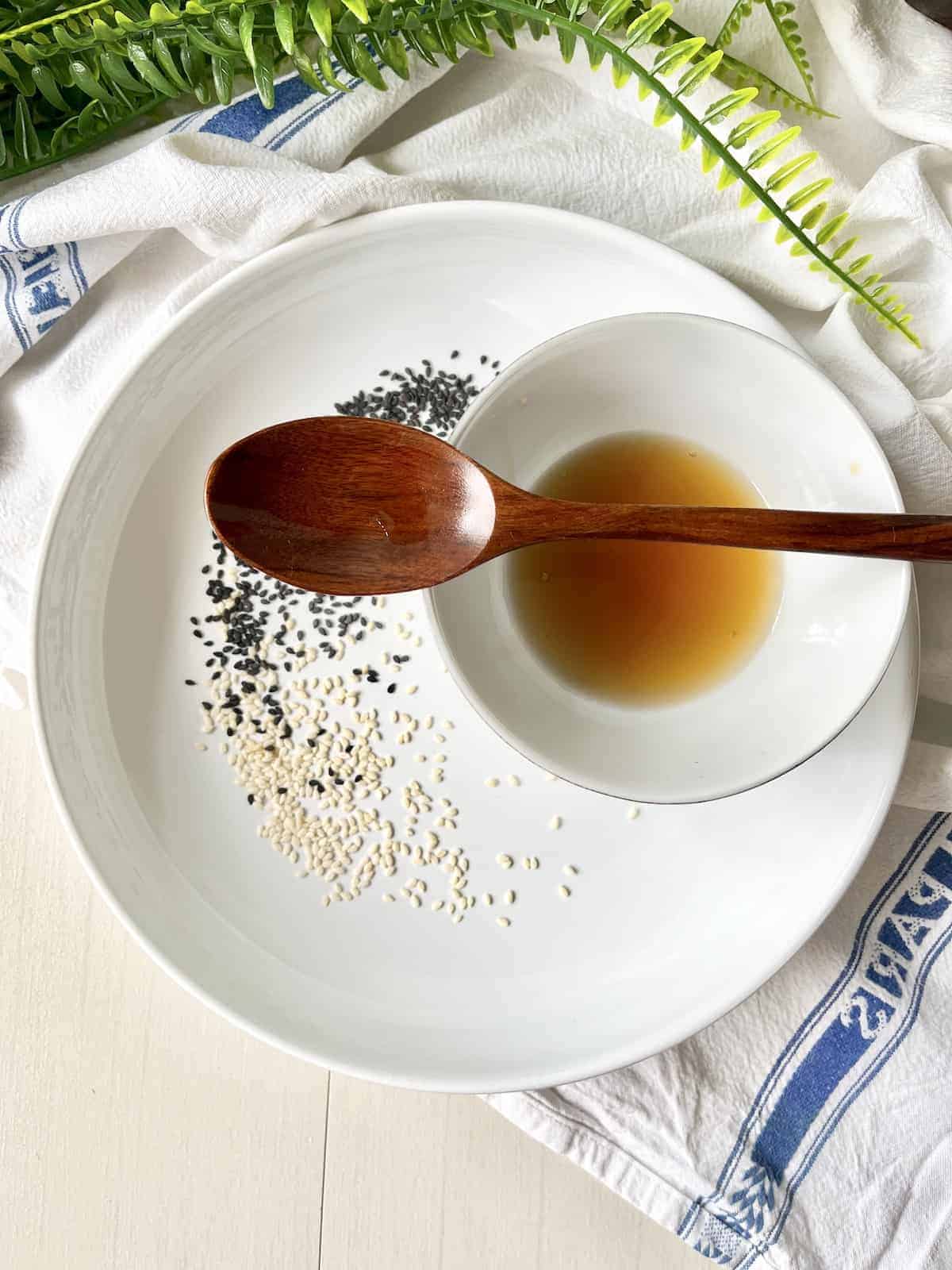
Sesame oil is a fragrant and versatile oil used in Asian cooking to add a rich, nutty flavor to dishes.
It is often used as a finishing ingredient, drizzled over dishes such as Cantonese congee before serving to enhance their taste. Sesame oil can be used in combination with sesame seeds, other sauces and oils to create flavorful marinades, stir-fries, and dipping sauces.
Used in These Recipes
Sweet Bean Sauce
Sweet Bean Sauce 甜面酱 (Tián miàn jiàng) is a sweet and thick paste made from wheat flour. It’s used in Peking duck and other Northern Chinese dishes.
Fermented Soybean Sauces
Taucheo (Chinese)
This Chinese fermented soy bean paste is similar to Japanese Miso and Korean doenjang but less well-known internationally.
It’s used to make Singapore Mee Siam.
Miso (Japanese)
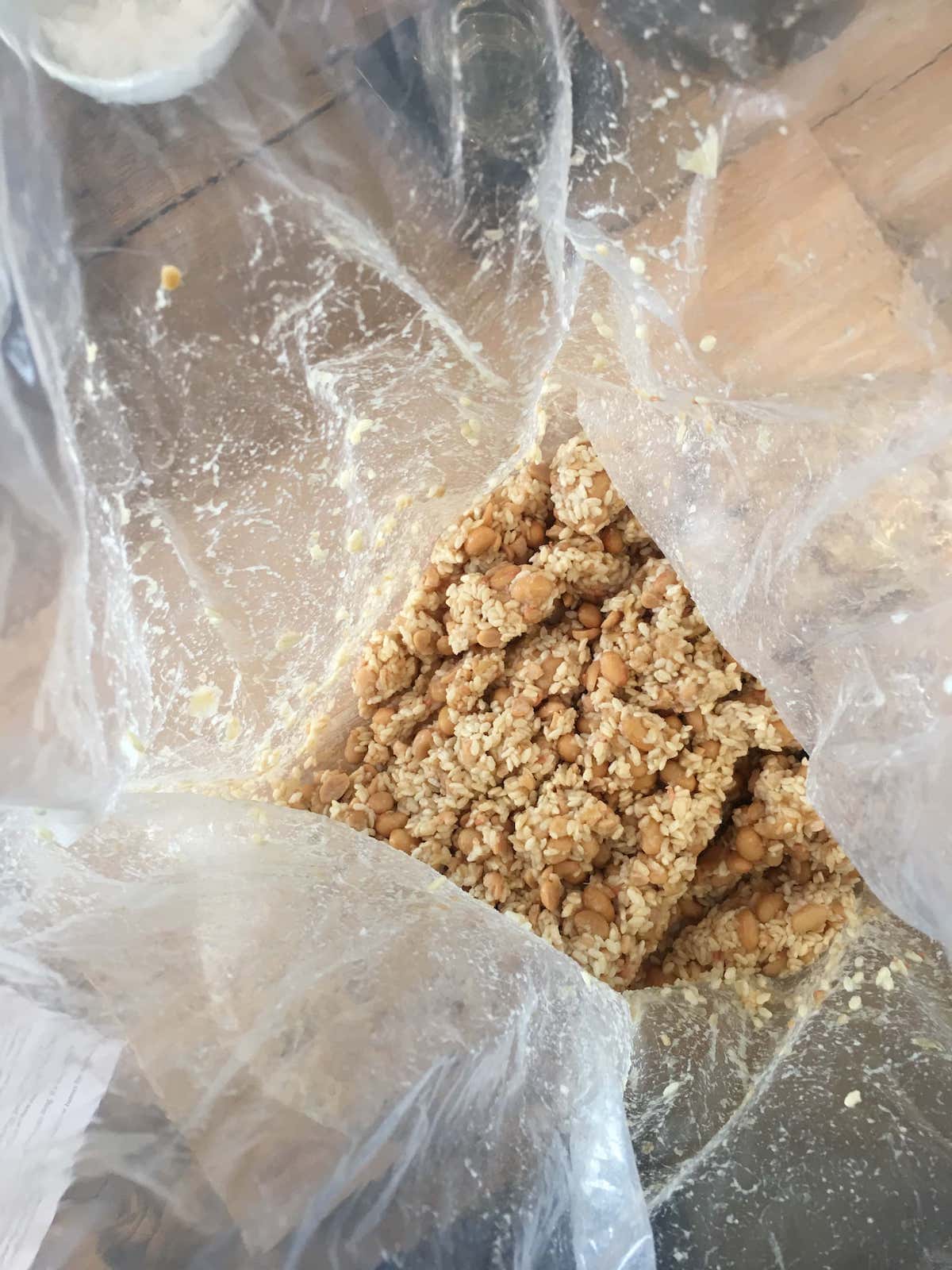
This is probably the most famous of the Asian fermented soybean pastes and used in Miso Soup and Miso Salmon. You can find it in may forms, such as as white miso, red miso etc
There are also other varieties such as barley miso.
Doenjang (Korean)
Similar to Japanese miso but more earthy in flavor, Korean doenjjang paste is used to make Korea Soybean Stew (doenjjang-jjigae.) I have used Japanese Miso for the dish when out of doenjjang!
Black Bean Sauce (Chinese)
Black bean sauce is a classic Chinese stir fry sauce.
You can buy it bottled or make it at home using fermented black beans, garlic, soy sauce, and other seasonings. It works well in dishes with meat, mushrooms, and various veggies such as broccoli.
La Dou Ban Jiang (Chinese)
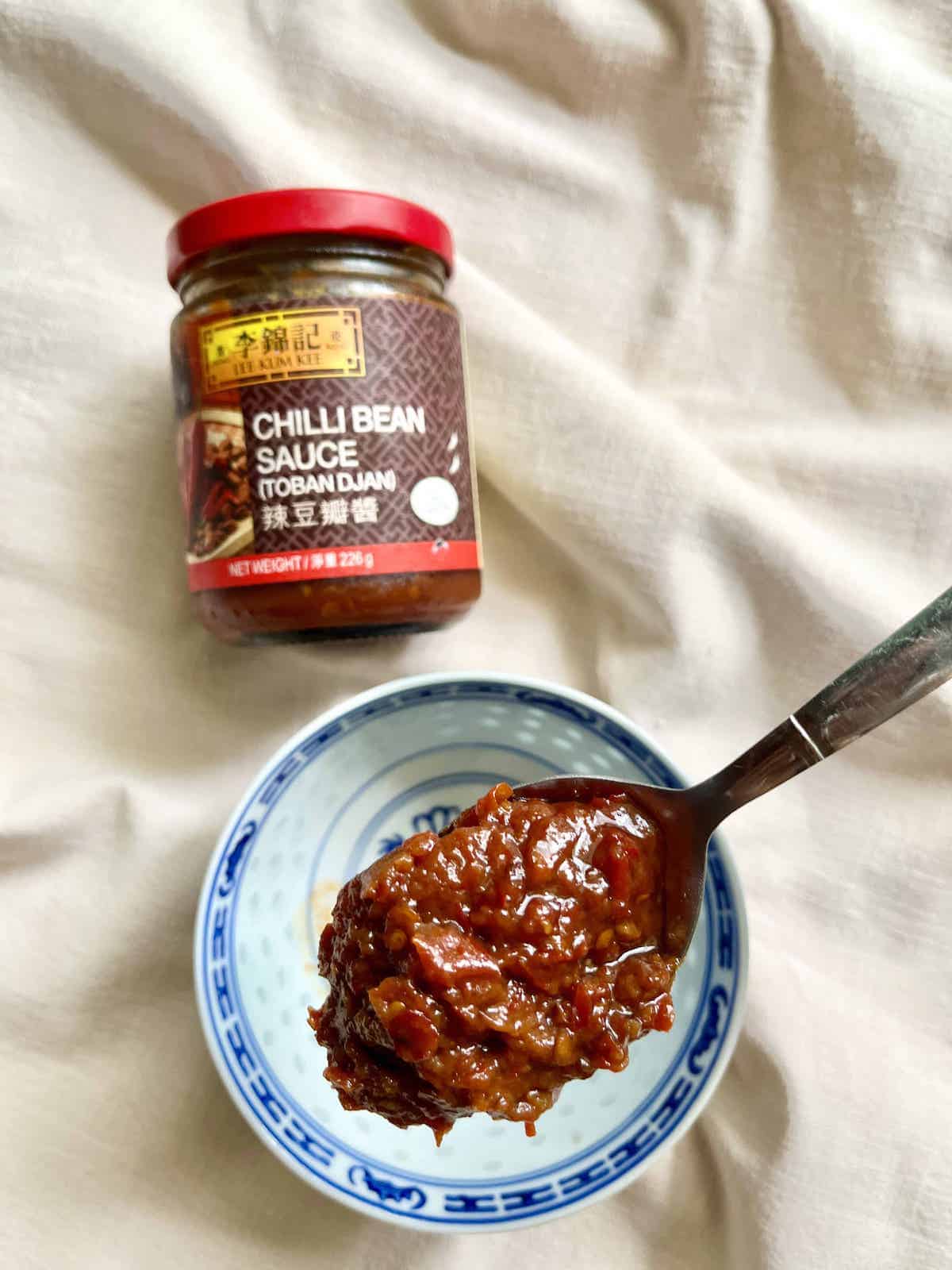
A popular sauce in Sichuan cuisine is SPICY Doubanjiang 豆瓣酱, also known as Chili Bean Paste. (Click the link for the best substitutes. There is also a non-spicy version that is more commonly used in Cantonese cooking.)
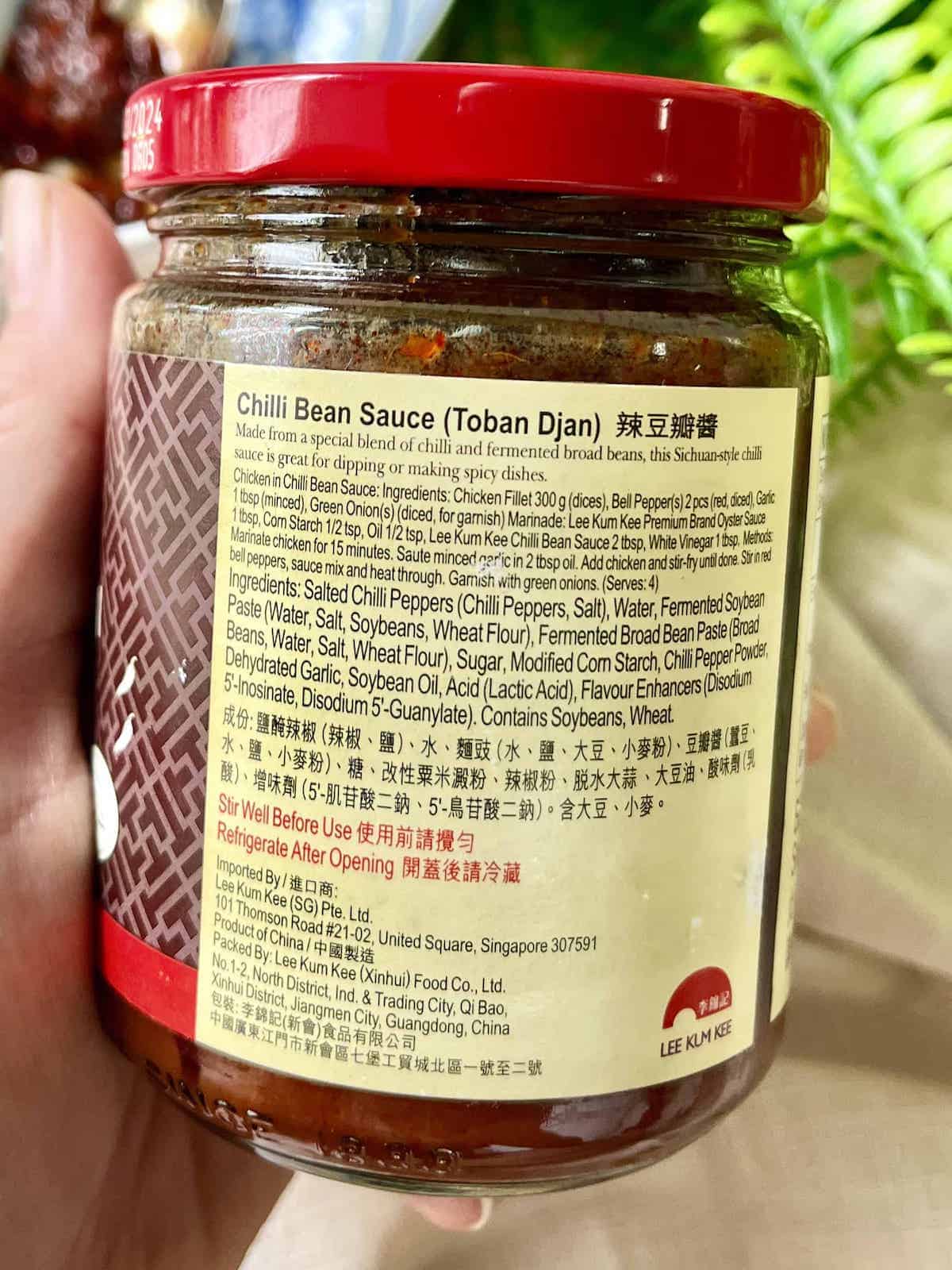
This is a fermented bean paste that incorporates red chili peppers and fermented soybeans, providing both heat and umami notes. It is used in dishes such as Sichuan Sauteed Eggplants and Mapo Tofu (麻婆豆腐 má pó dòufu.)
Used in these Recipes
2. Stir Fry Sauces
Salted Egg Sauce
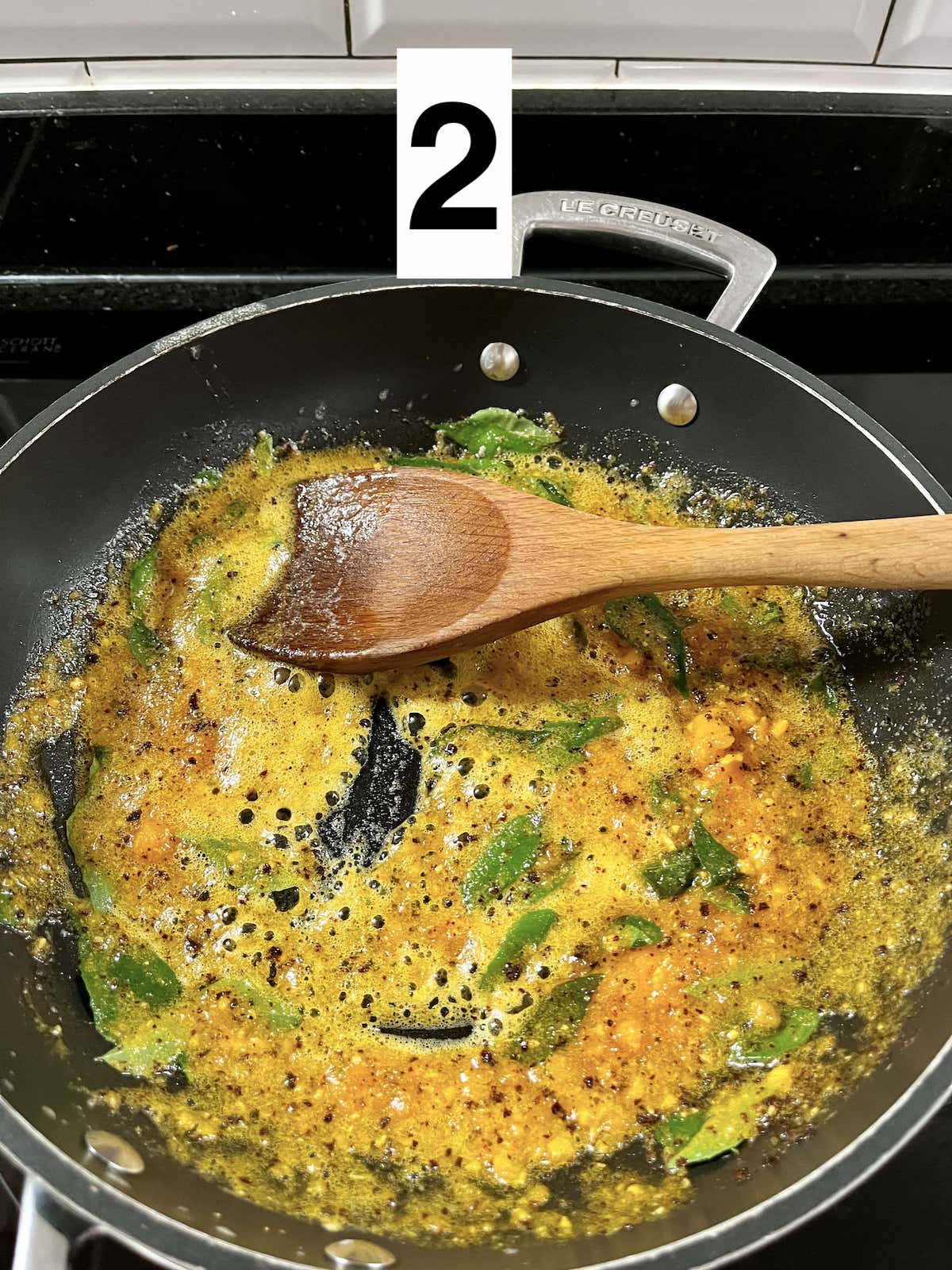
Salted Egg Sauce is a very popular Cantonese sauce used in Chinese and Southeast Asian food. You can use it in popcorn, to coat fried tofu, cornflakes, and more!
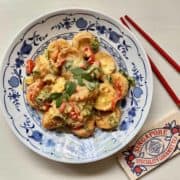
Used in these Recipes
Sweet and Sour Sauce
This orange-red sauce is made from sugar, vinegar, and (in the West) ketchup. It is perfect for coating fried pork and fried chicken or dipping egg rolls and wontons.
Mala Sauce
Another famous Sichuan sauce is mala 麻辣, which is a combination of chili oil, Sichuan peppercorns and other Chinese spices, responsible for the unique numbing spiciness in many dishes.
You can find it in Mala Huo Guo 麻辣火锅 huǒguō (Hotpot.)
Duojiao Chili Sauce
A commonly used sauce in Hunan cuisine is duojiao 剁椒, which made from salted chili peppers. The resulting pickled chili is pungent, salty, and spicy, adding a unique punch to various dishes.
3. Dipping Sauces

Asian food uses dipping sauces to add flavor and texture.
Sambal Oelek
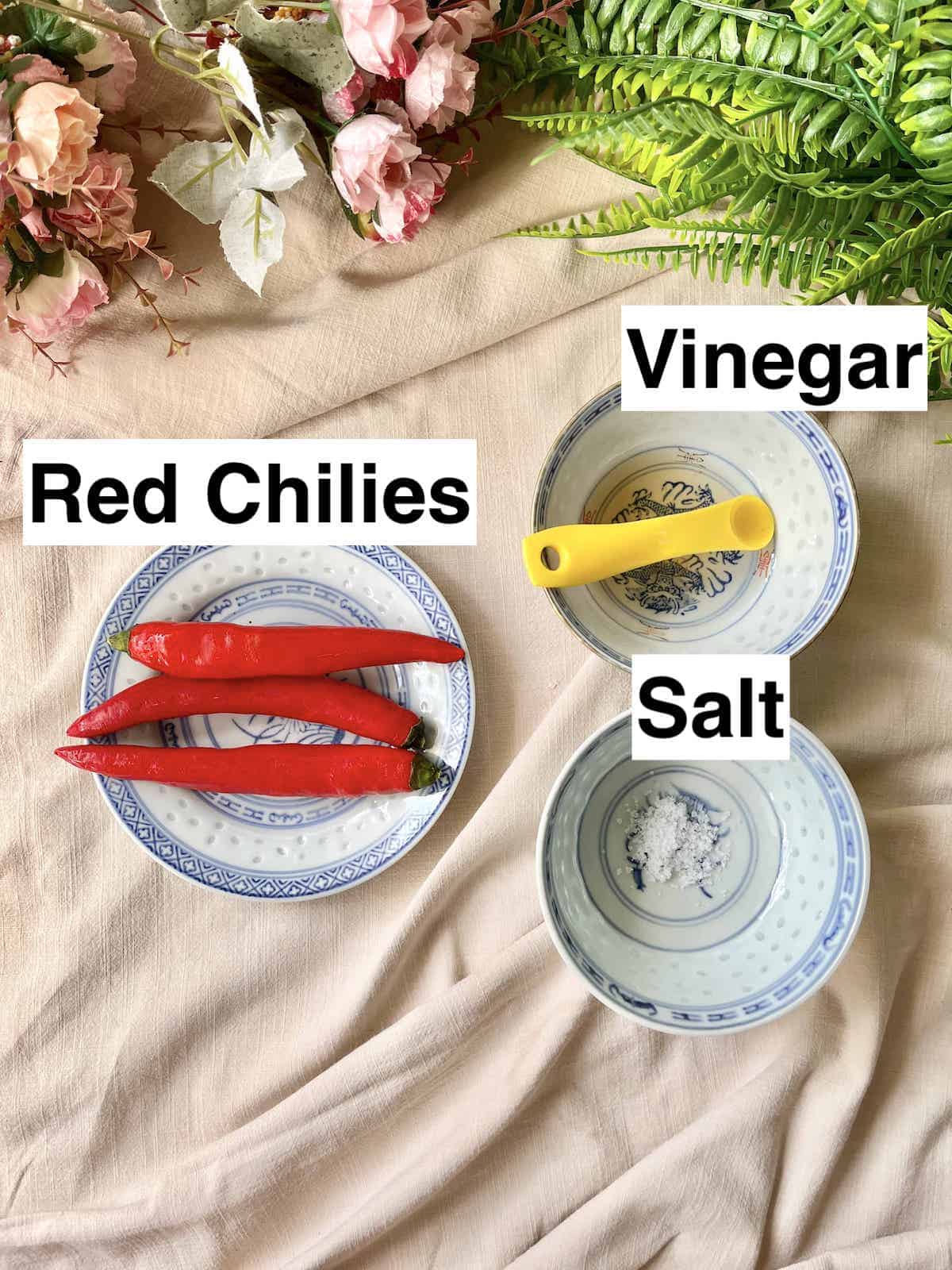
In Indonesia, there are hundreds of sambal sauces. One of the most basic ones is Sambal Oelek, which is a 3-ingredient chili sauce.
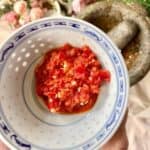
Filipino Toyomansi
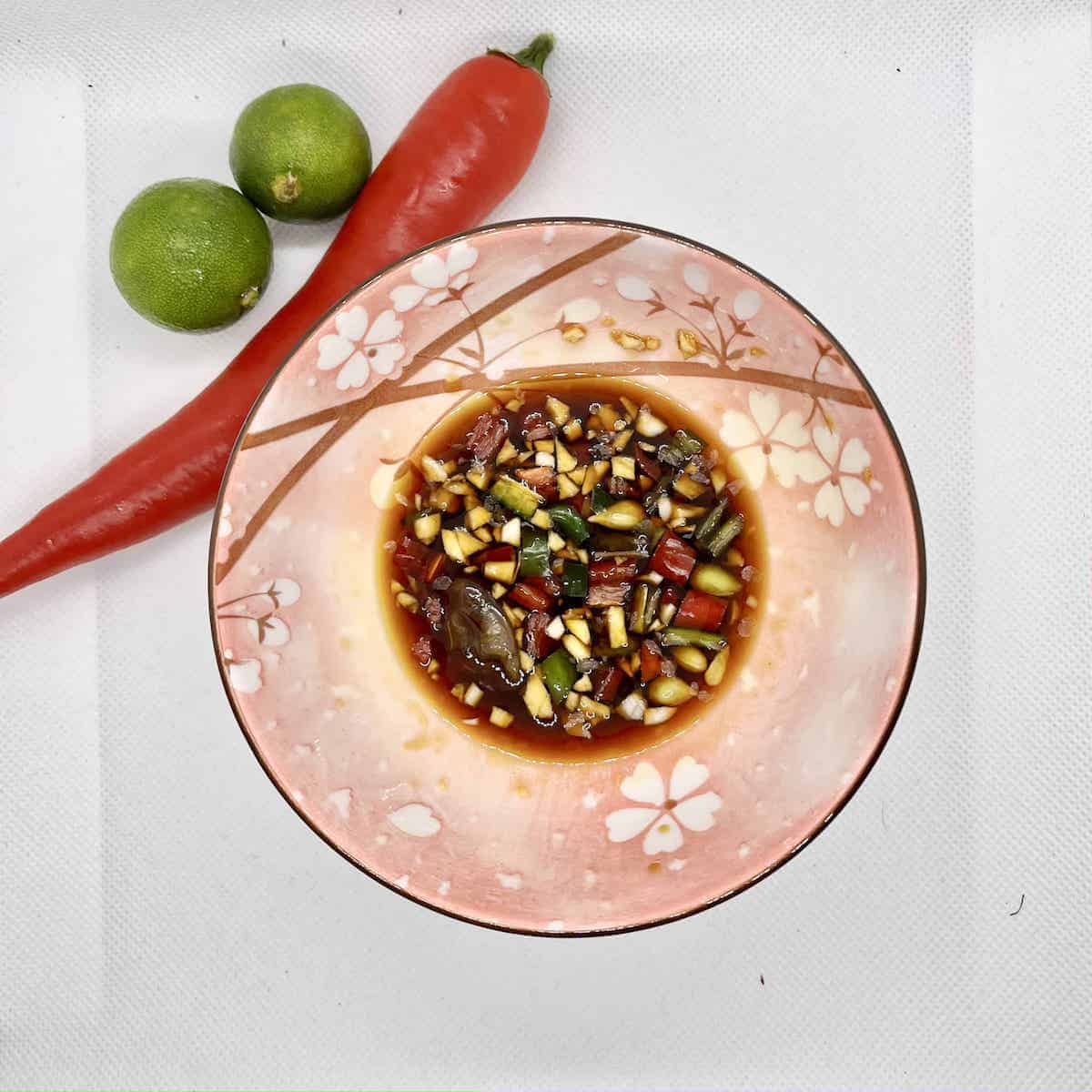
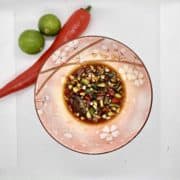
Vietnamese Nuoc Cham
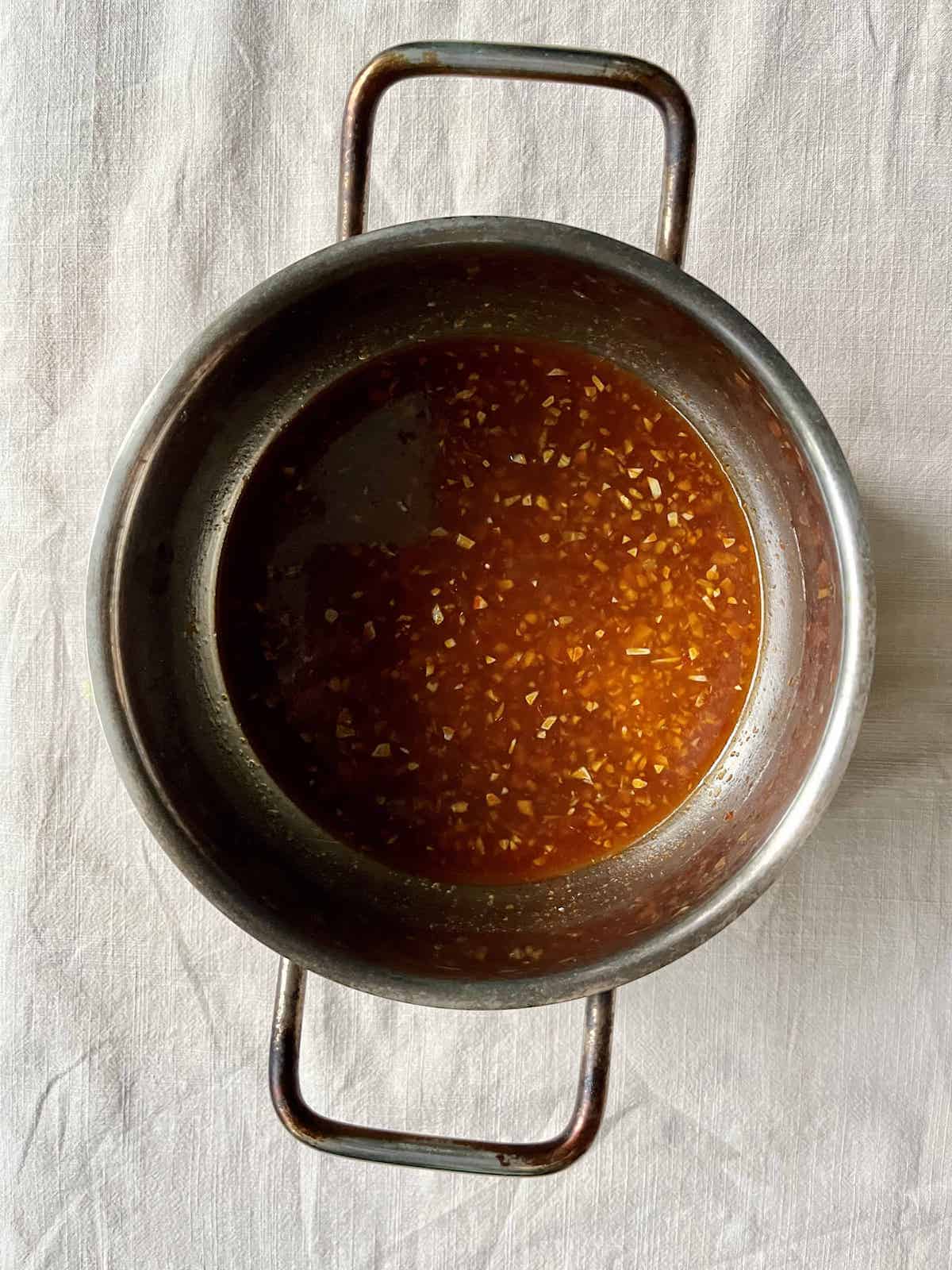
This is the most common Vietnamese sauce, made by mixing fish sauce, white sugar, lime juice, and hot water. (It needs to be hot to melt the white sugar.)
You can find a recipe for it in my Noodle Salad recipe.
Plum Sauce
This is a sweet-tart condiment made of plums, vinegar, ginger, chili, and garlic.
It is commonly served with Peking Duck.
Sha Cha Jiang
A staple in Taiwanese cuisine is Sha Cha Jiang 沙茶酱. Made from garlic, shallots and chilies (among other things), it is used as a hot pot sauce (but can also be used to stir fry.)
Sometimes translated as Chinese BBQ sauce, it is also used in Fujian and Teochew food.
Dumpling Sauce
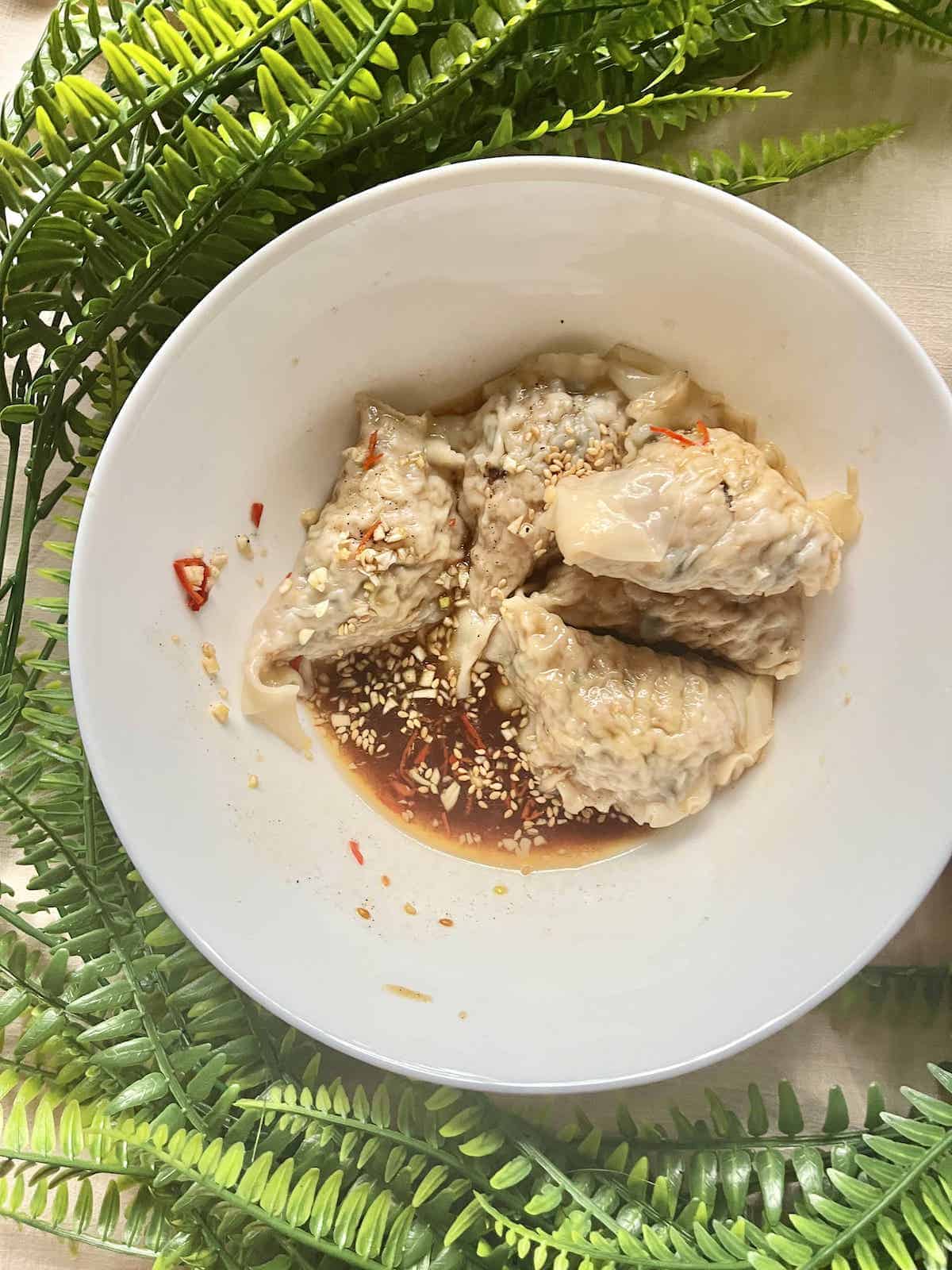
1 of the most famous uses of Black Vinegar, Dumpling Sauce is made by mixing black vinegar with other ingredients such as sesame seeds and, sometimes, a bit of chicken stock (Secret ingredient!)
You’ll find it served with Jiaozi or even Scallion pancakes.
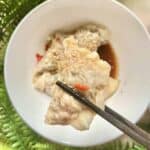
Chili Sauce

Both chili oil 辣椒油 (Là jiāo yóu) and chili garlic sauce are used to add a spicy kick to dishes such as cold cucumber salad, dumpling sauce, lettuce wraps, and stir-fried noodles.
I’ve even used Chinese chili oil in popcorn! Lao Gan Ma is a popular brand but it’s easy to make your own using dried chilies (or chili flakes), spices, oil and other seasonings.
4. Others
Char Siu Sauce
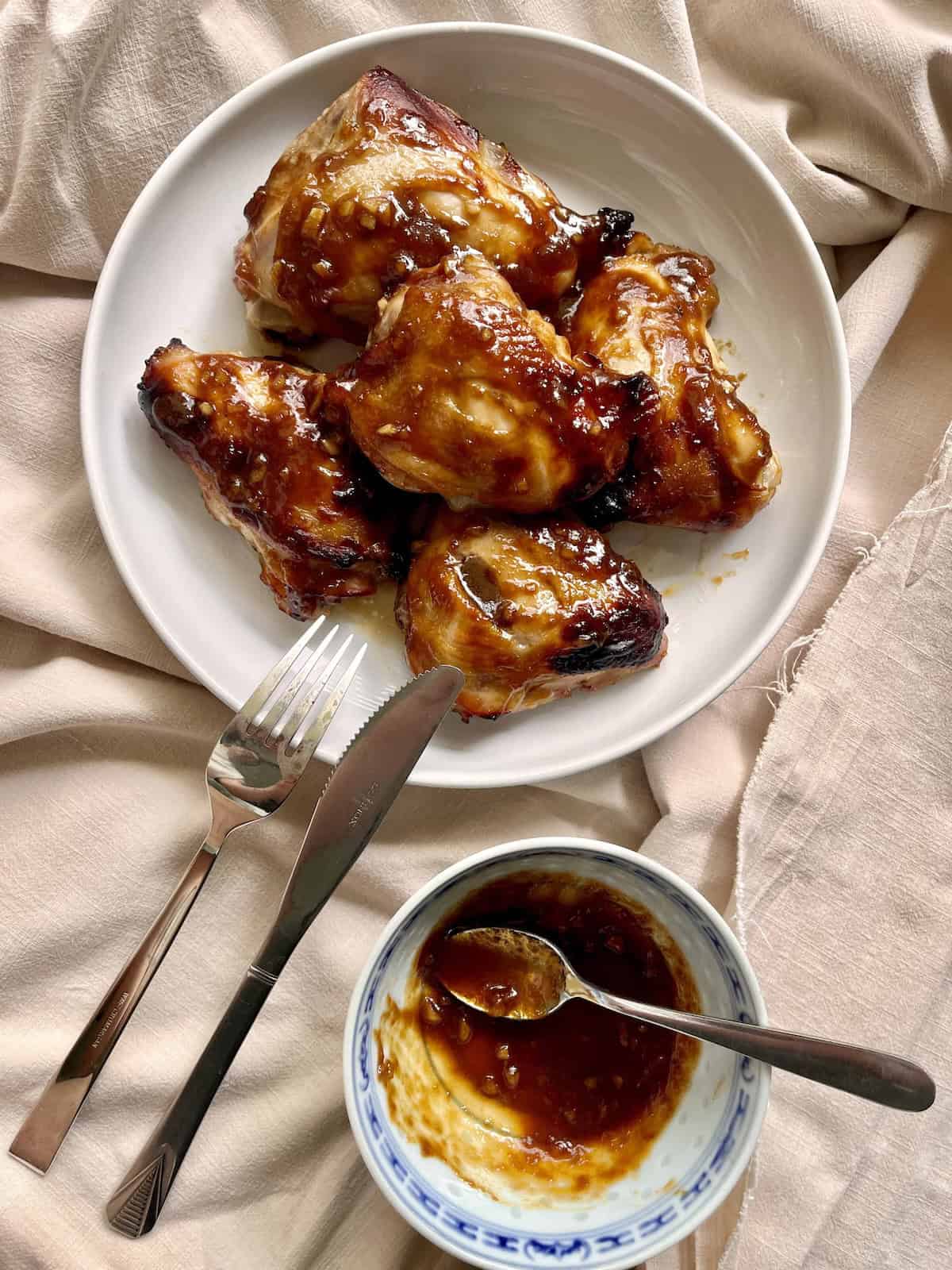
This is a mixture of soy sauce, hoisin sauce, brown sugar, and Chinese five-spice powder. Some people may have a secret ingredient or 2 to add to their Char Siu sauce (叉烧酱 chāshāo jiàng.)
It’s used to marinate pork for Char Siu (goes very well with these side dishes!)
Any questions about how to use these Asian Sauces in your home cooked food? Let me know in the comments!
The post 29 Asian Sauces appeared first on Greedy Girl Gourmet.
